Growing up, my family had two Easter and Lent traditions that had nothing to do with our heritage. One was that right before Greek Easter, my mother and I would make a huge batch of dolmas (stuffed grapevine leaves). We made a weekend of it and it was so much fun. The other tradition took longer than a weekend, but appealed to my artistic senses… we would do Ukranian Easter egg dyeing. And that’s what this post is about.
The History
Since pre-Christian times, the art of batik egg decoration in Slavic cultures has been present. The approach is simple and the supplies traditional.
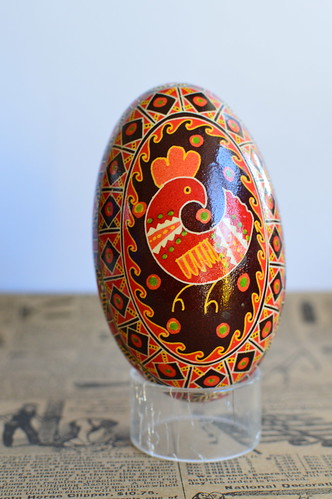
The Process
Using a stylus called a kistka (we used the plain wood stick kind with a copper or metal conical top), creators write or draw beeswax onto raw eggs to create designs the wax-resist method. The wider side of the metal cone atop the kistka stylus scoops up the beeswax from a block then it is held over a candle’s flame long enough to warm the wax to be liquid. It flows through the tip of the cone and is drawn on the egg. If you draw on an undyed egg, those parts stay white, then with each dyed layer the wax-covered areas are preserved in that layer’s color. It makes for an intricate or simple result, depending on the design chosen and how many colors used. After all layers of wax and dye are applied, the eggs dry then are gently warmed to melt off all the wax. After that, a very careful polish and protective lacquer. Somewhere in the end of the process, the contents of the egg are blown out so the egg won’t dry/burst/inplode/rot when displayed long-term. Here are photos of the process from other Flickr members.
The Result
When I was home at Christmas, I photographed some of the eggs my mother and I made when I was younger. These were mostly made when I was eight to 12 years old. Usually, this isn’t a craft for children, but I was obsessed with creating (so little has changed, right?) and held strong fine motor skills, so she let me give it a go.
My mother made this one. Keep in mind, she has Multiple Sclerosis, so this is so impressive! I think she actually learned Pysanka to combat the challenges brought on my MS.
This egg we created together.
And these eggs I made on my own. These first two drew from the traditional Vazon Tree of Life design for inspiration.

Which is your favorite? Have you tried creating your own Pysanka? What did you think? To this day, the scent of warming beeswax brings me back to the kitchen table in the breakfast room with my mother. Happy memories.

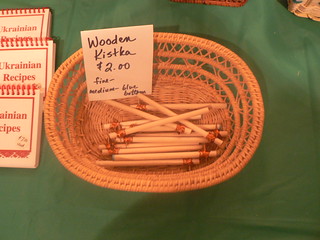


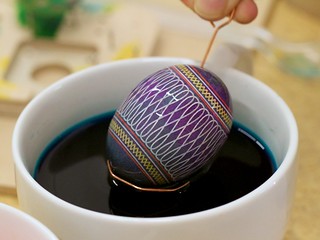

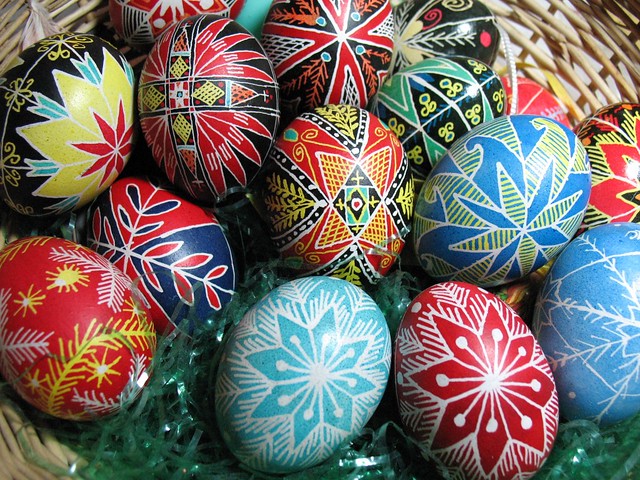
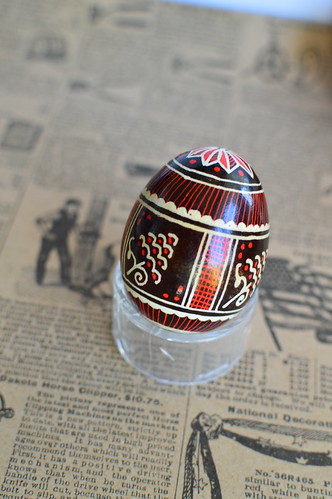
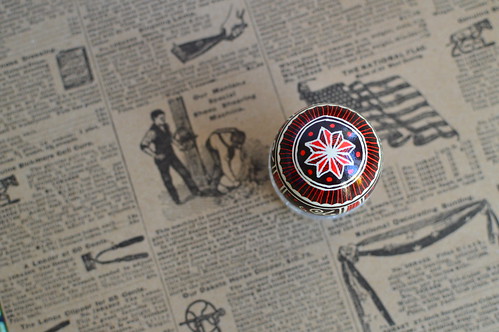

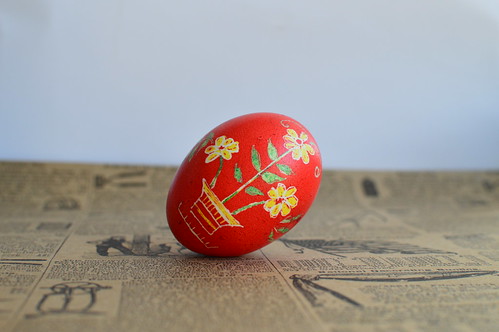
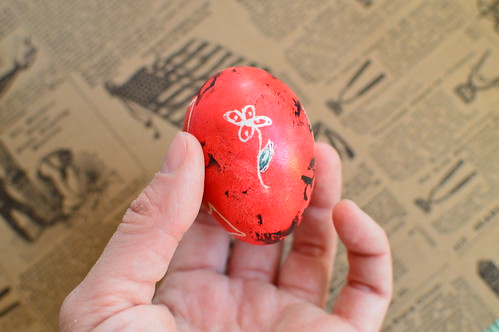
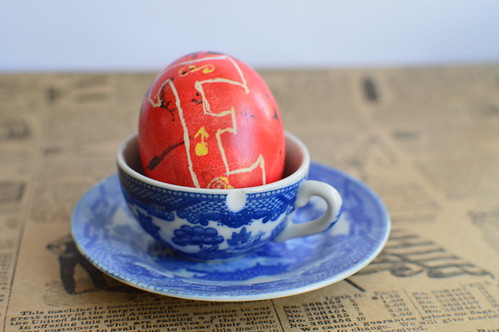
Oh, I am so impressed! Have always wanted to try this. Any tips?
Patience and not trying to create an entire egg in one sitting – or even one week. It’s fun to do with someone else too. Keeps you sane when something doesn’t go as planned.
Gorgeous.